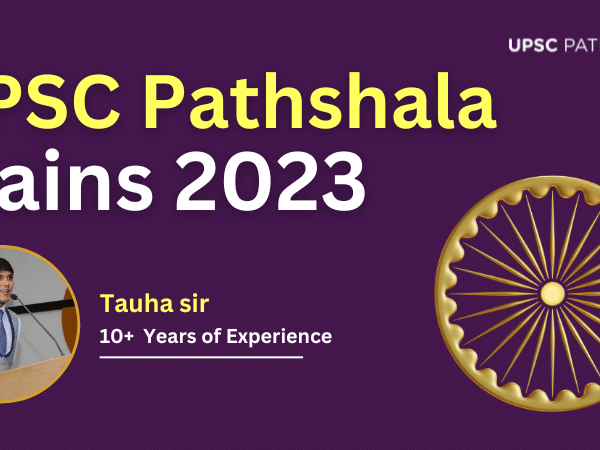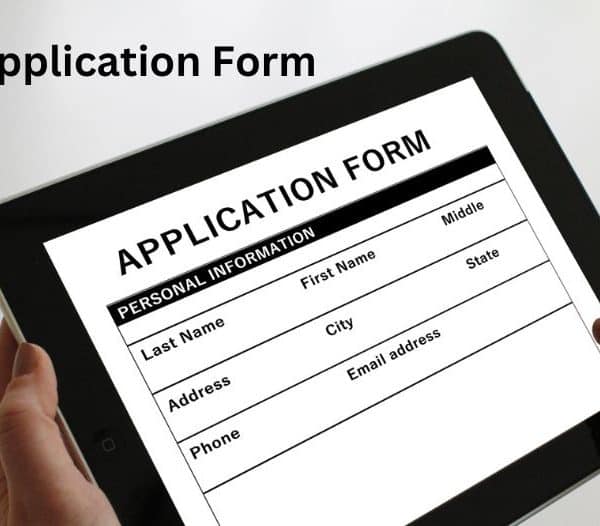Geology is among the IFS optional subjects available to you. It is a high-scoring subject, but it is not a common pick due to a lack of references and materials.
Aspirants should practice past question papers as well as mock tests while studying for the IFS UPSC exam. In this article, you will find the Geography syllabus for IFS and the best reference books available out there.
Geology Syllabus for IFS
Check out the sections below to know the Geology optional subject for Indian Forest Service
Paper I Section A
General Geology
The Solar System, meteorites, origin and interior of the earth. Radioactivity and age of earth; Volcanoes-causes and products, volcanic belts.Earthquakes-causes, effects, earthquake belts, seismicity of India, intensity and magnitude,seismographs. Island arcs, deep sea trenches and mid-ocean ridges. Continental drift-evidences and mechanics; sea-floor spreading, plate tectonics. Isostasy, orogeny and epeirogeny. Continents and oceans.
Also Read: UPSC IFS Notification 2022: Check Important Dates, Exam Pattern, Eligibility & More
Geomorphology and Remote Sensing
Basic concepts of geomorphology.Weathering and mass wasting. Landforms, slopes and drainage. Geomorphic cycles and their interpretation, Morphology and its relation to structures and lithology. Applications of geomorphology in mineral prospecting, civil engineering, hydrology and environmental studies. Geomorphology of the Indian sub-continent.
Aerial photographs and their interpretation merits and limitations.The Electromagnetic Spectrum. Orbiting satellites and sensor systems.Indian Remote Sensing Satellites. Satellites data products. Applications of remote sensing in geology.The Geographic Information System and its applications. Global Positioning System.
Structural Geology
Principles of geologic mapping and map reading, projection diagrams, stress and strain ellipsoid and stress-strain relationships of elastic, plastic and viscous materials. Strain markers in deformed rocks.
The behaviour of minerals and rocks under deformation conditions. Folds and faults classification and mechanics.Structural analysis of folds, foliations, lineations, joints and faults, unconformities. Superposed deformation. Time – the relationship between crystallisation and deformation. Introduction to petrofabrics.
Paper I Section B
Paleontology
Species definition and nomenclature.Megafossils and Microfossils. Modes of preservation of fossils. Different kinds of microfossils. Application of microfossils in correlation, petroleum exploration, paleo-climatic and paleoceanographic studies, Morphology, geological history and evolutionary trend in Cephalopods, Trilobita, Brachiopoda, Echi-noidea and Anthozoa, Stratigraphic utility of Ammonoidea, Trilobita and Graptoloidea, Evolutionary trend in Hominidae, Equidae and Probo-scidae. Siwalik fauna, Gondwana flora and its importance.
Stratigraphy and Geology of India
Classification of stratigraphic sequences: lithostratigraphic, biostratigraphic, chronostratigraphic and magnetostratigraphic and their interrelationships. Distribution and classification of Precambrian rocks of India. Study of stratigraphic distribution and lithology of Phanerozoic rocks of India with reference to fauna, flora and economic importance.
Major boundary problems -Cambrian/Precambrian, Permian/ Triassic, Cretaceous/Tertiary and Pliocene/ Pleistocene. Study of climatic conditions, paleogeography and igneous activity in the Indian subcontinent in the geological past. Tectonic framework of India. Evolution of the Himalayas.
Hydrogeology and Engineering Geology
Hydrologic cycle and genetic classification of water. Movement of subsurface water, Springs. Porosity, permeability, hydraulic conductivity, transmissivity and storage coefficient, classification of aquifers.Water-bearing characteristics of rocks. Ground-water chemistry. Saltwater intrusion.
Types of wells.Drainage basin morphometry. Exploration for groundwater. Groundwater recharge. Problems and management of groundwater, Rainwater harvesting. Engineering properties of rocks.
Geological investigations for dams, tunnels and bridges. Rock as construction material. Alkali-aggregate reaction. Landslides causes, prevention and rehabilitation. Earthquake-resistant structures.
Paper II Section A
Mineralogy
Classification of crystals into systems and classes of symmetry. The international system of crystallographic notation. Use of projection diagrams to represent crystal symmetry. Crystal defects. Elements of X-ray crystallography. Petrological microscope and accessories.
Optical properties of common rock-forming minerals. Pleochroism, extinction angle, double refraction, birefringence, twinning and dispersion in minerals. Physical and chemical characters of rock-forming silicate mineral groups.
Structural classification of silicates. Common minerals of igneous and metamorphic rocks. Minerals of the carbonate, phosphate, sulphide and halide groups.
Igneous and Metamorphic Petrology
Generation and crystallisation of magma. The crystallisation of albite-anorthite, diopside-anorthite and diopside wollastonite- silica systems. Reaction principle. Magmatic differentiation and assimilation. Petrogenetic significance of the textures and structures of igneous rocks.
Petrography and petrogenesis of granite, syenite, diorite, basic and ultrabasic groups, charnockite, anorthosite and alkaline rocks. Carbonatites. Deccan volcanic province. Types and agents of metamorphism. Metamorphic grades and zones. Phase rule.
Facies of regional and contact metamorphism. ACF and AKF diagrams. Textures and structures of metamorphic rocks. Metamorphism of arenaceous, argillaceous and basic rocks. Minerals assemblages, Retrograde metamorphism. Metasomatism and granitisation, migmatites, granulite terrains of India.
Sedimentology
Sedimentary rocks: Processes of formation, diagenesis and lithification, Properties of sediments. Clastic and non-clastic rocks-their classification, petrography and depositional environment, Sedimentary facies and provenance. Sedimentary structures and their significance. Heavy minerals and their significance. Sedimentary basins of India.
Paper-II Section B
Economic Geology
Ore, ore minerals and gangue, the tenor of ore, classification of ore deposits. Process of formation of mineral deposits. Controls of ore localisation. Ore textures and structures, Metallogenic epochs and provinces, Geology of the important Indian deposits of aluminium, chromium, copper, gold, iron, lead, zinc, manganese, titanium, uranium and thorium and industrial minerals.
Deposits of coal and petroleum in India. National Mineral Policy. Conservation and utilisation of mineral resources. Marine mineral resources and Law of Sea.
Mining Geology
Methods of prospecting-geological, geophysical, geochemical and geo-botanical, Techniques of sampling. Estimation of reserves of ore, Methods of exploration and mining metallic ores, industrial minerals and marine mineral resources. Mineral beneficiation and ore dressing.
Geochemistry and Environmental Geology
Cosmic abundance of elements, Composition of the planets and meteorites, Structure and composition of earth and distribution of elements, Trace elements, Elements of crystal chemistry – types of chemical bonds, coordination number, Isomorphism and polymorphism, Elementary thermodynamics.
Natural hazards-floods, landslides, coastal erosion, earthquakes and volcanic activity and mitigation, Environmental impact of urbanisation, open cast mining, industrial and radioactive waste disposal, use of fertilisers, dumping of mine waste and fly-ash. Pollution of ground and surface water, marine pollution, environment protection-legislative measures in India.
Also Read: UPSC ESE 2022 Admit Card: Know the UPSC ESE 2022 Exam Dates and Schedule
Geology Optional Preparation Strategy
Part 1
Understand the exam papers and its pattern thoroughly before deciding how to approach the exam. Each optional paper contains eight questions divided into two sections: A and B. The first and fifth questions must be answered.
Aside from this, you must answer at least one more question from each section. Finally, 5 questions must be attempted in total, which implies the final question might come from either section.
For Optional Paper 1 in Geology, tackle three problems from Section A and two from Section B. This is due to the fact that section A covers all of the fundamental themes for which you will find enough preparation materials.
Part 2
Geomorphology, geotectonic, geochemistry, petrology, ore origin, mineral trading, and lending, planning topography, subterranean water examination, groundwater science, and other topics must be prioritised. Questions about the geology of energy are also commonly posed.
Do not skip any topics simply because they are rarely questioned in the exam. You can spend less time and effort preparing specific topics, but you should not miss any of them.
The scores you receive on the optional paper affect your position in the toppers list, which affects your selection and placement. As a result, your goal should be to prepare in such a way that you achieve so much more than the average cut-off for the exam.
Part 3
When possible, provide diagrams to back up your replies. In a subject like geology, diagrams can be used in a variety of ways. Consider the questions that allow for more graphical depiction when choosing which to attempt, since this will help in making your answer stand out.
Because there are relatively few readymade notes and materials available, begin your preparation as early as possible because you will need to provide adequate time to write your own notes.
Maintain the word limit and follow a logical and organised framework for each answer. Address the questions to the point after you’ve understood it, and don’t stray from the main issue of the inquiry.
Also Read: UPSC CSE 2022 Notification: Know the Prelims Exam Dates, Schedule and Eligibility Criteria
Reference Books for Geology Optional
Engineering And General Geology by Parbin Singh
Delta Sedimentation: East Coast of India by Singh, I.B. & Swamy, A.S.R.
Geology and Evolution of the Indian Plate by SM Naqvi
General geology by GB Mahapatra
The Elements of Palaeontology by Rhona M. Black
Palaeontology by Jain and Anantharaman
Structural Geology by Marland P. Billings
Trends in Objective Geology by Aussif Sayeed
TextBook of Geology by P.K. Mukherjee
Concise Geology by P.K. Mukherjee
Concepts and Applications by Ravi, Bastia
Principles of Igneous and Metamorphic Petrology by JD Winter
Groundwater Hydrology by David Todd
Principles Of Engineering Geology by KM Bangar
Economic Geology: Economic Mineral Deposits by U Prasad
Rutley’s Elements of Mineralogy
Delta Sedimentation: East Coast of India by Singh, I.B. & Swamy, A.S.R.
Dimensions of Himalayan Geology by Biyani, A.K.
Early Man in Eastern Himalayas: North-East India and Nepal by Sharma, A. K.
Geological Maps by D.K. Awasthi
Mineral Exploration: Recent Strategies by S. Rajendran
Conclusion
If you start your preparation as soon as possible, you will have enough time and space to go over the full syllabus numerous times. While this is a subject that few people pursue, it is nonetheless engaging and may bring a lot of value to your career. We hope you begin your preparation as soon as possible in order to maximise your chances of winning the IFoS Mains in February 2022.
For more info, visit UPSC Pathshala now.
Also Read: UPSC Online Application Form 2022: Latest Updates with UPSC Preparation and Strategy







